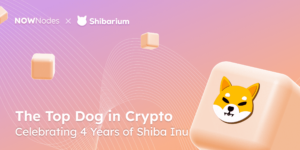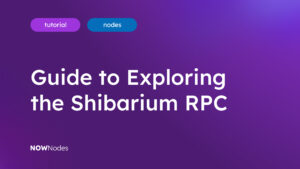In the ever-expanding world of blockchain technology, security has become a critical concern. With millions of users and significant assets on decentralized platforms, robust protection against malicious attacks is crucial. Shibarium, the Layer-2 solution for the Shiba Inu ecosystem, not only emphasizes scalability and cost reduction but also integrates multiple security mechanisms to ensure that Shibarium is secure for both users and developers.
In this article, we’ll explore how Shibarium’s security mechanisms ensure a safe and reliable blockchain environment. Whether you’re a casual user, developer, or investor, knowing about these security features will help you make informed decisions about using Shibarium.
What Is Shibarium?
Before diving into security, let’s quickly recap what Shibarium is. Shibarium is a Layer-2 scaling solution built on Ethereum, tailored for the Shiba Inu ecosystem. It addresses common Ethereum issues like high gas fees and slow transaction times, while preserving a decentralized framework.
Shibarium speeds up transactions and reduces fees by processing them off the main Ethereum chain. It retains Ethereum’s security while supporting decentralized finance (DeFi), non-fungible tokens (NFTs), and various decentralized applications (dApps), all of which boost the Shiba Inu ecosystem.
The Importance of Security in Layer-2 Solutions
As Layer-2 networks continue to grow, the need for strong security becomes more apparent. Unlike Layer-1 blockchains like Bitcoin or Ethereum, Layer-2 solutions have to ensure that the security of their network is on par with the underlying Layer-1. This is essential to prevent vulnerabilities that attackers could exploit.
Shibarium is no different. By ensuring that all data and transactions remain secure, Shibarium provides users with the confidence to transact, invest, and build on its network without fearing malicious activity.
Let’s explore the key security mechanisms that Shibarium has implemented to ensure its blockchain environment remains safe.
Shibarium’s Key Security Mechanisms
1. Decentralized Validators and Proof of Stake (PoS) Consensus Mechanism
One of the most critical components of any blockchain network is its consensus mechanism. Shibarium uses a Proof of Stake (PoS) consensus mechanism, recognized for its energy efficiency and security. In this system, validators confirm transactions by staking their tokens as collateral, with selection based on the amount they are willing to stake.
This staked collateral acts as a security deposit, ensuring that validators act in the network’s best interest. Validators that attempt malicious behavior risk losing their staked assets, incentivizing honest participation.
The decentralized nature of Shibarium’s validator network also ensures that no single entity can control the blockchain, making it resistant to attacks such as the infamous 51% attack.
2. Smart Contract Audits and Formal Verification
Smart contracts are the backbone of decentralized applications (dApps) on Shibarium. However, poorly coded or vulnerable smart contracts can be an entry point for attackers. To prevent this, Shibarium employs rigorous smart contract auditing procedures, ensuring that dApp developers follow best practices and their code is free from vulnerabilities.
Shibarium also supports formal verification, a mathematical method for proving that smart contracts behave as intended. By using this technology, developers can ensure that their code operates securely, reducing the chances of unexpected exploits.
3. Multi-Layer Security Approach
Shibarium takes a multi-layered approach to security, combining several mechanisms to protect its users. This approach includes both on-chain and off-chain protections to create a secure environment:
- On-chain security: This involves securing the blockchain itself, including its consensus mechanism and the validation of transactions.
- Off-chain security: Involves safeguards related to the infrastructure supporting the blockchain, such as wallets, exchanges, and node providers.
Shibarium implements multiple security layers to keep its system secure. If attackers compromise one layer, the remaining layers stop major breaches.
4. Decentralized Governance and Decision-Making
Decentralization isn’t just about processing transactions; it’s also about decision-making. Shibarium lets token holders participate in governance, so the community makes key decisions instead of a centralized authority.
This decentralized governance model adds an extra layer of security, as it reduces the risk of single points of failure or centralized attacks. Moreover, it considers the entire ecosystem’s interests, not just a few stakeholders.
5. Cross-Layer Security with Ethereum
As a Layer-2 solution, Shibarium is built on Ethereum, one of the most secure blockchains in existence. Shibarium benefits from Ethereum’s robust security infrastructure, including its decentralized network of nodes and advanced cryptographic techniques.
Shibarium handles transactions off-chain but anchors them to the Ethereum mainnet. This cross-layer security ensures a high level of trust and immutability. This setup prevents potential issues such as double-spending, which can occur in less secure Layer-2 solutions.
6. Node Security and Availability
A blockchain network is only as secure as its nodes. Shibarium has partnered with trusted node providers to ensure that its network remains secure and resilient to attacks.
For developers and users who require reliable node access, services like NOWnodes provide full access to Shibarium nodes, ensuring 24/7 availability and fast connections. With decentralized node providers, Shibarium avoids network downtime and ensures that no single point of failure can take down the entire network.
8. Staking for Security
Beyond securing transactions, the staking mechanism in Shibarium plays a key role in its overall security architecture. Validators and delegators lock up tokens as collateral, which means they have a vested interest in maintaining the integrity of the network.
This economic incentive structure helps ensure that validators work in the best interest of the network. Those who act maliciously will have their staked tokens slashed, thereby deterring attacks or dishonest behavior.
Why Shibarium’s Security Matters
With the rise of decentralized finance (DeFi) and other applications built on blockchain networks, security threats are becoming more sophisticated. From smart contract vulnerabilities to network attacks, blockchain ecosystems are under constant threat.
By integrating multiple layers of security, Shibarium provides its users with confidence. Whether you’re transferring assets, using a dApp, or developing on the platform, you can be sure that Shibarium’s security mechanisms are working hard to protect you.
Furthermore, for those looking to develop and scale on Shibarium, having access to reliable node infrastructure is crucial. NOWnodes provides easy access to Shibarium nodes, ensuring full support for developing and maintaining your projects. This makes the Shibarium network not only secure but also highly accessible for developers worldwide.
Conclusion
Shibarium is not just a Layer-2 solution for the Shiba Inu ecosystem; it’s a secure and scalable platform built to support the future of decentralized applications. By combining multi-layered security, decentralized governance, and Ethereum’s robust security, Shibarium provides a safe environment for users and developers alike.
Whether you’re a user seeking fast transactions and low fees or a developer creating the next big dApp, Shibarium’s strong focus on security makes it an ideal choice for anyone in the blockchain space. With NOWnodes (https://nownodes.io) providing easy access to Shibarium nodes, you can start building on this secure network effortlessly.
Still not sure if Shibarium is right for you? Explore the network and take advantage of the secure, fast, and scalable infrastructure it provides—backed by some of the best security mechanisms in the industry.



